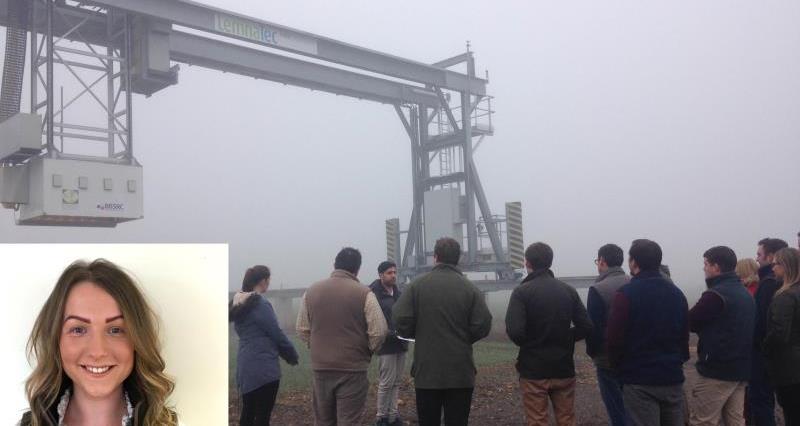Our last visit of 2016 was to Rothamsted Research, in a very foggy Harpenden, Hertfordshire. Who would have thought next to the hustle and bustle of life on the outskirts of London, lies the longest running agricultural research centre in the world; 2018 will mark 175 years?
From the preliminary schedule we had been given prior to arriving I was expecting a lot from this facility; however it was only when I started to tour the site and hear from the scientists that I realised just how much goes on at Rothamsted that I never even imagined!
For those who are not currently aware of the CROPROTECT website - and app - I would have a Google; it is a fantastic platform that provides both farmers, and agronomists with a certain amount of guidance on pests, and weed management – after all knowledge is power, or in the words of Rothamsted, ‘where knowledge grows’. Dr Toby Bruce provided a fantastic insight into the benefits of the online platform which is tailored to the crops UK farmers are currently growing, allowing them to both recognise and register any disease or weeds they may encounter on their farm. As a farm business manager for Openfield in the East Riding of Yorkshire, I am keen to know how many of my farmers are currently using this tool, and if so how beneficial they find it.
We couldn’t visit Rothamsted and not discuss blackgrass. We heard how in conjunction with others the Blackgrass Resistance Initiative has been set up; this works with farmers across the country to sample and analyse blackgrass for resistance. It was worrying to hear that relatively high levels of resistance have been detected across the country and in response to very well-known products; with the crop protection toolbox getting ever smaller it certainly gave us food for thought.
A vast part of our day was spent with the Agro Ecology team – which I now know involves the understanding of ecological mechanisms that can deliver sustainable crop production – and all were so unbelievably passionate about what they do! A particular highlight was a visit to the on-site farm with Dr Jason Lim to look at radar entomology (now I know this is the study of insect movement!), Jason spoke in depth about the work they are doing to develop techniques to perform advanced research into insect movement. Studying the movement of insects can allow an insight into their migration – one study looked into the migration of the Painted Lady Butterfly, but other ongoing projects involve the bumble bee, and indeed moths! Of course an advantage to the UK farmer perhaps could be the opportunity to look at pest movement amongst their crops.
I also learned from some time with Julian Franklin, Head of Horticulture and Controlled Environments that I really should pay more attention of where the salmon I purchase is sourced. It isn’t something I’ve ever thought about, but I’m now aware that wild caught salmon contains far more of the essential omega oils than that of farmed salmon, and as a result the work going on in the greenhouses to introduce these essential oils into camelina plants could be truly revolutionary!
Rothamsted Research is a fantastic place, and I don’t doubt on a second or even third visit you could easily spend a day looking at completely different projects to what you have seen before. A huge thank you to Coralie Little for hosting throughout our day, and to both the NFU and Openfield for making the Cereal Development Programme happen.
What's the Cereals Development Programme?
Want to know the arable sector from seed to shop shelf?
The 2016 Cereals Development Programme is a joint initiative by the NFU and grain cooperative Openfield. It offers a fantastic opportunity for anyone interested in combinable crops to improve their understanding of how the industry works, and how they can get the most from it.
The scheme is aimed at the next generation and participants are usually aged between 25 and 35 years old, but there is flexibility depending on individual circumstances. Find out more here.
